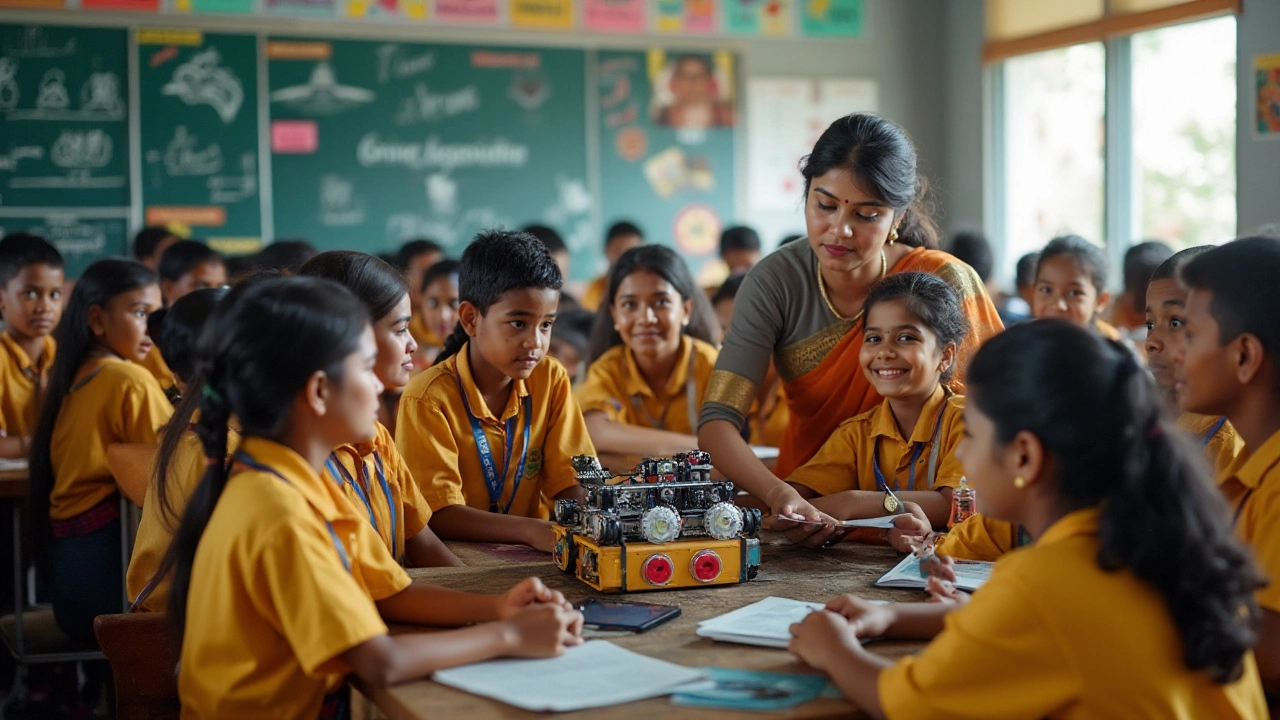CBSE Curriculum – Everything You Should Know
When working with CBSE curriculum, the academic framework set by the Central Board of Secondary Education for schools across India. Also known as CBSE syllabus, it defines yearly learning outcomes, assessment patterns and subject weightage. The competitive exams, national tests such as JEE, NEET and UPSC that students aim for after class 12 draw heavily on this framework, so understanding the curriculum directly boosts exam readiness. Likewise, Indian schools, both private and government institutions that follow the board's guidelines rely on the curriculum to structure classrooms, timetables and teacher training. The board also prescribes textbooks, standardized books approved by NCERT that align with the syllabus, ensuring every student gets the same core content. Finally, the syllabus, the detailed list of topics, chapters and skills for each subject acts as a blueprint for lesson planning and self‑study. Together these entities form a tight network: the CBSE curriculum encompasses the syllabus, requires specific textbooks, influences Indian schools, and shapes the preparation for competitive exams. By grasping how each piece fits, you can navigate school life and exam strategy with confidence.
Why the CBSE Curriculum Matters for Your Academic Journey
First, the curriculum’s clear learning objectives mean you always know what’s expected at the end of each grade. This predictability helps teachers design lessons that hit the right marks and lets students track progress without guesswork. Second, because the board updates the syllabus every few years, the content stays relevant to current scientific discoveries and industry trends, which is why many engineering and medical aspirants trust it for competitive exam prep. Third, the standardized textbooks eliminate the chaos of multiple reference books – you get a single, vetted source that aligns with exam patterns, reducing the need for extra purchases. Fourth, schools that follow the CBSE curriculum benefit from a uniform assessment system; marks from one school are comparable to those from another, making college admissions fairer. Finally, the direct link between the curriculum and competitive exams means that extra‑circular study materials often just reinforce what’s already in the syllabus, saving you time and effort. In short, the CBSE framework simplifies learning, ensures consistency, and translates directly into better performance on the tests that matter most.
Now that you see how the CBSE curriculum, its syllabus, textbooks, the schools that adopt it, and the competitive exams are all interlinked, you’re ready to explore the resources below. Below you’ll find articles that dive deeper into exam strategies, syllabus breakdowns, textbook recommendations and tips for making the most of your school’s CBSE‑based classes. Use them to fine‑tune your study plan and stay ahead of the curve.
This article delves into which Indian state is recognized for having the highest IQ levels based on factors aligned with the CBSE syllabus. By examining various educational assessments and state-specific educational practices, it highlights the contributing factors to intellectual performance in India. The discussion includes insights into how education systems are structured to foster intelligence across different regions. Useful tips and fascinating facts are shared to provide a comprehensive perspective on the topic.
24 Dec
2024
The Central Board of Secondary Education (CBSE) is a renowned educational board originating from India, known for its structured and rigorous syllabus. Although CBSE is predominantly found within India, its influence extends globally with schools in various countries offering its curriculum. This article delves into the expansion of CBSE schools beyond Indian borders, the reasons for its international presence, and what makes this system appealing to expatriates and others seeking quality Indian education worldwide.

